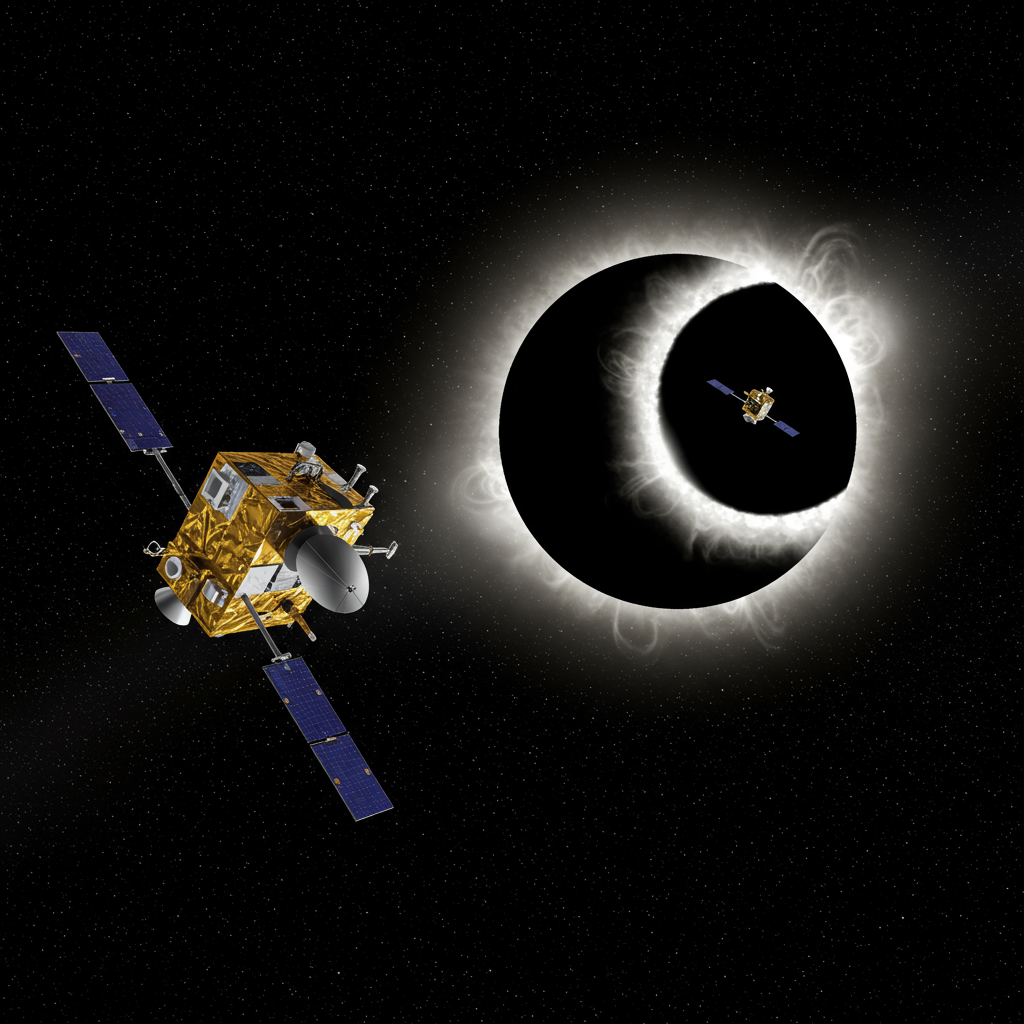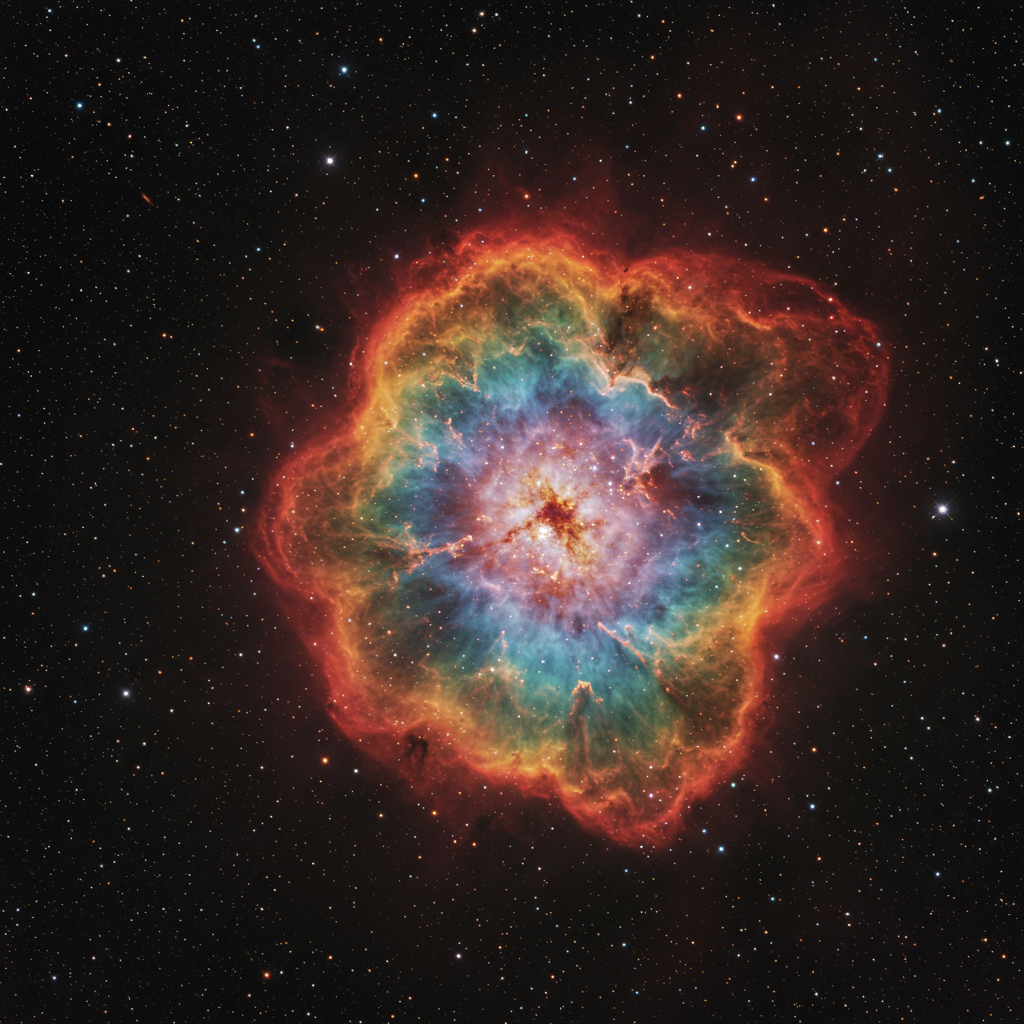For stargazers and scientists alike, total solar eclipses offer a fleeting, precious glimpse of the sun’s ethereal outer atmosphere, the corona. But these natural events are rare, unpredictable, and last just minutes. Now, the European Space Agency (ESA) has successfully created a controlled, artificial solar eclipse in space, a monumental achievement set to revolutionize our study of the sun.
The ESA’s Proba-3 mission has just unveiled its first incredible images, captured by two satellites working together as a single, massive instrument. This mission represents the world’s first high-precision formation flying endeavor, proving a decade of technological development.
An Eclipse Machine in Orbit
Launched on December 5, 2024, aboard an Indian PSLV rocket, the Proba-3 mission consists of two small satellites: the Occulter satellite and the Coronagraph satellite. Their ingenious design allows them to fly in an ultra-precise formation in space, with the Occulter satellite positioned to perfectly block the blinding light from the sun’s disk for the Coronagraph satellite. This action creates a sustained, artificial solar eclipse, allowing the coronagraph instrument (named ASPIICS) to focus on the sun’s faint corona.
On May 23, 2025, the mission achieved a critical milestone: the first successful demonstration of this formation flying. For several hours, the two spacecraft aligned themselves 492 feet (150 meters) apart with astonishing millimeter-level accuracy – all autonomously, without ground intervention. This precise alignment successfully cast a shadow from the Occulter onto the ASPIICS instrument, enabling the capture of the first artificial eclipse images.
Why Study the Sun’s Corona?
The solar corona, the sun’s outermost layer, is a region of intense scientific interest and mystery. While the visible surface of the sun, the photosphere, is about 10,000 degrees Fahrenheit (5,500°C), the corona reaches searing temperatures of up to two million degrees Fahrenheit (over 1.1 million °C). Scientists are still trying to understand the mechanisms behind this extreme heating.
More critically, the corona is where the solar wind originates and where powerful phenomena like coronal mass ejections (CMEs) erupt. These events can significantly impact Earth, causing spectacular aurora displays but also potentially disrupting power grids, communication systems, and satellites – a phenomenon known as space weather.
Studying the corona is essential for better predicting and mitigating the effects of space weather. While satellites can observe the inner and outer corona, there’s an observational gap for the mid-corona region (roughly 1.1 to 3 solar radii from the sun’s center). This critical area is typically blocked by standard instruments. Historically, the only way to get a clear view of the mid-corona was during the brief totality of a total solar eclipse.
Overcoming Natural Limitations
Natural total solar eclipses are beautiful but inconvenient for sustained scientific study. They occur infrequently in any given location and last only a few minutes. Proba-3 changes this. By creating an artificial eclipse, the mission can observe the corona for up to 6 hours during each 19.6-hour orbit. This ability provides a hundredfold increase in uninterrupted study time compared to natural eclipses, offering an unprecedented opportunity to watch the corona evolve and track solar wind acceleration from its source.
The first images released by ESA showcase this capability, revealing details in the inner corona with remarkably low levels of scattered light. Scientists were particularly excited to capture a prominence, a cloud of relatively cold plasma often seen during natural eclipses.
Precision Flying in Space
Proba-3’s achievement is a triumph of engineering. The satellites maintain their precise formation autonomously using an onboard system combining cameras, LEDs, and laser rangefinders. The Occulter, a 4.4-foot (1.4-meter) disk, must cast a small 3.15-inch (8 cm) shadow precisely onto the Coronagraph, requiring millimeter accuracy in distance and sub-millimeter accuracy laterally. This level of precision is orders of magnitude greater than previously achieved in space-based coronagraphs and is maintained while the satellites orbit Earth at distances up to 37,000 miles (60,000 kilometers) at apogee, where gravitational and atmospheric forces are weakest.
While a basic concept of using one spacecraft to block the sun for another was attempted during the 1975 Apollo-Soyuz mission (with disappointing results due to light scattering), Proba-3 represents the full realization of this idea through advanced autonomous technology.
A Glimpse into the Future
The success of Proba-3’s formation flying demonstration is not just crucial for solar physics; it’s a significant step for future space missions. The ability to precisely coordinate multiple spacecraft opens doors for building much larger structures in orbit or operating complex multi-satellite observatories, such as the planned LISA gravitational wave observatory.
Proba-3 is set for a two-year mission and plans to generate approximately 1,000 hours of corona observations. In line with ESA’s commitment to open data, the mission will make its data publicly available, allowing scientists worldwide to calibrate and analyze the groundbreaking observations.
As the sun enters a period of increased activity (solar maximum), Proba-3’s ability to provide near-continuous, high-quality data on the corona, particularly the previously elusive mid-corona, is more valuable than ever. While the thrill of chasing a natural eclipse will undoubtedly persist, Proba-3 offers a new, powerful way to unlock the mysteries of our star.




